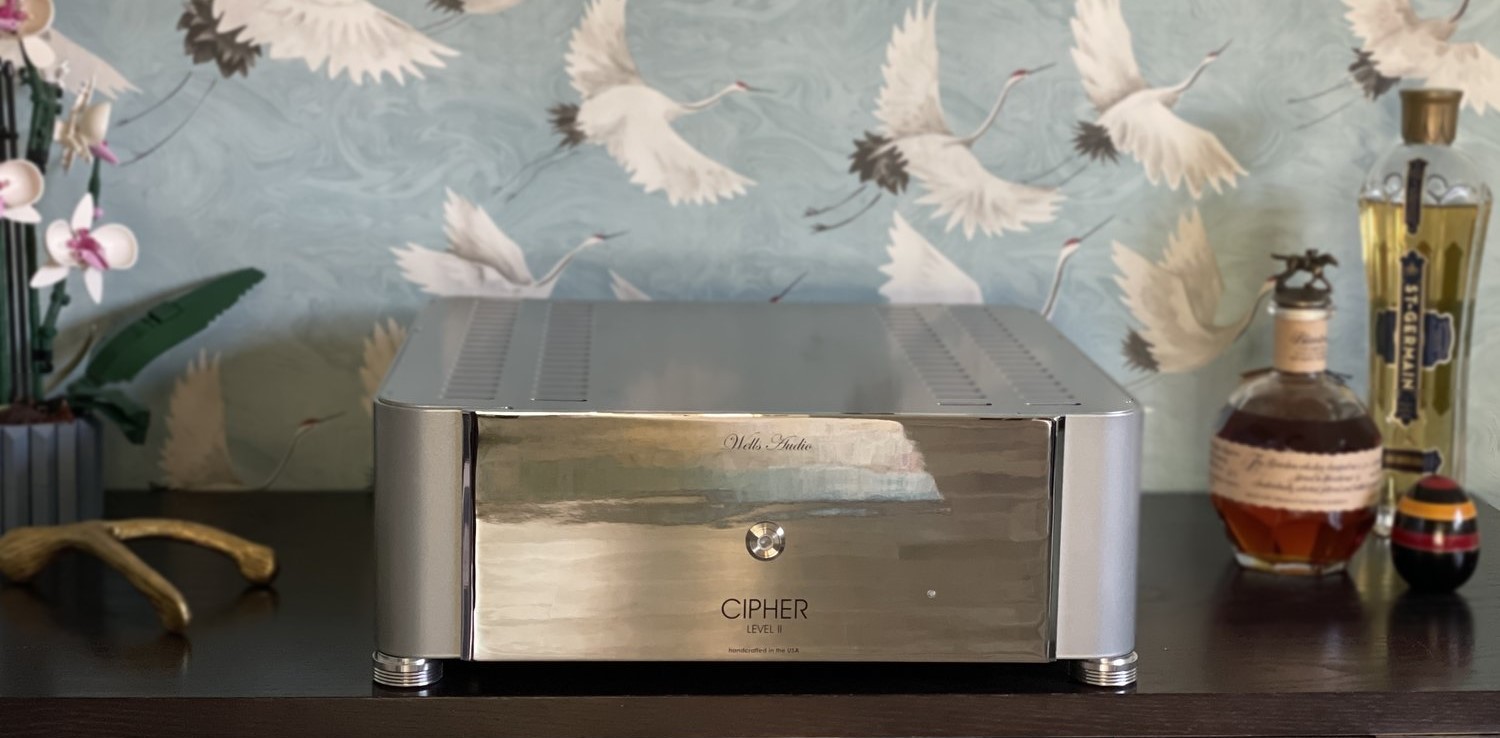Wells Audio Cipher II Level II
Zeros and Ones That Speak to Me
In 2012, I had the opportunity to meet Jeff Wells, the talented designer and owner of Wells Audio. He walked into the audio store I was managing, carrying an amplifier under his arm, and asked if I would like to hear an amplifier surpassing anything I had in the store near its price point. Bold indeed! I immediately thought back to 1983 when John Iverson walked into our store with an Eagle 2 amplifier under his arm and made a similar proclamation. That day, John left with an order for four Eagle 2 amplifiers. I was similarly impressed with Jeff's amplifier in 2012, but we were flush with electronics then, and Jeff did not leave with an order that day. It turns out that was our loss, as the amplifier I listened to that day would become a classic from Wells Audio, the Akasha, which has earned a cult-like following over the years since then.
Fast forward to the Florida Audio Expo 2024, I walked into the Wells Audio room and sat down to hear a digitally sourced system that caught my attention. Jeff and I reminisced about our first meeting 12 years earlier. I inquired about the DAC being used, as the sound I heard in his room had a detailed yet unusually relaxed feeling for a digital source. It was his new all-out effort, the Wells Audio Cipher II Level II DAC. What intrigued me was the absence of tension I typically feel when listening to a digitally sourced system. I was surprised to learn that it was a Delta Sigma chip-based DAC and was even more surprised to learn it had a tube-based output stage. Most attempts to use a tube-based output stage in a DAC design that I have heard typically end up sounding… well… tubelike… with a loss of micro detail and less-than-impressive bass articulation. Yes, they smooth out some digital nasties, but at a cost. They injected tube colorations and deficiencies on top of the digital sound, trading one coloration for another.
I was curious about the difference between this DAC and the Delta Sigma DACs I have previously experienced, where I lost interest in the music after about 20 minutes of listening.
Wells Audio and Jeff Wells
After almost two decades in retail Audio sales at his store in Campbell, CA. Jeff Wells decided to leap into manufacturing in 2013. His long-running friendship with designer Scott Frankland (MFA Moore, Frankland, and Associates, Wavestream Kinetics) blossomed into a business relationship. Jeff tapped Scott to be his technical collaborator on circuit design. Along with circuit design with Scott, Jeff handles the final voicing of the component and its cosmetic design. Wells Audio's first product was the previously mentioned Akasha amplifier, originally meant to be a product Jeff would sell out of his retail store. It turned out to be the vehicle that allowed Jeff to move from a declining brick-and-mortar business model to a manufacturing one. Focusing on hybrid technology and meticulous craftsmanship, Wells Audio's amps and preamps have been critically well-received in the marketplace and have garnered a loyal following among audiophiles.
Wells Audio products are entirely designed and constructed in California, and they currently manufacture amplifiers, preamplifiers, DACs, integrated amplifiers, headphone amplifiers, and power conditioners. All parts are domestically sourced except for the circuit boards and specific small passive components. Components are dispatched to Scott Frankland Associates's facility for board assembly. Once the boards are populated, they are assembled at the Wells Audio facility in San Jose, CA. Since Jeff does the final assembly, the units can be customized to accommodate specific customer needs. Need a volume control on the DAC or an AES-balanced input? No problem. Do you need an I2S output? Easily done.
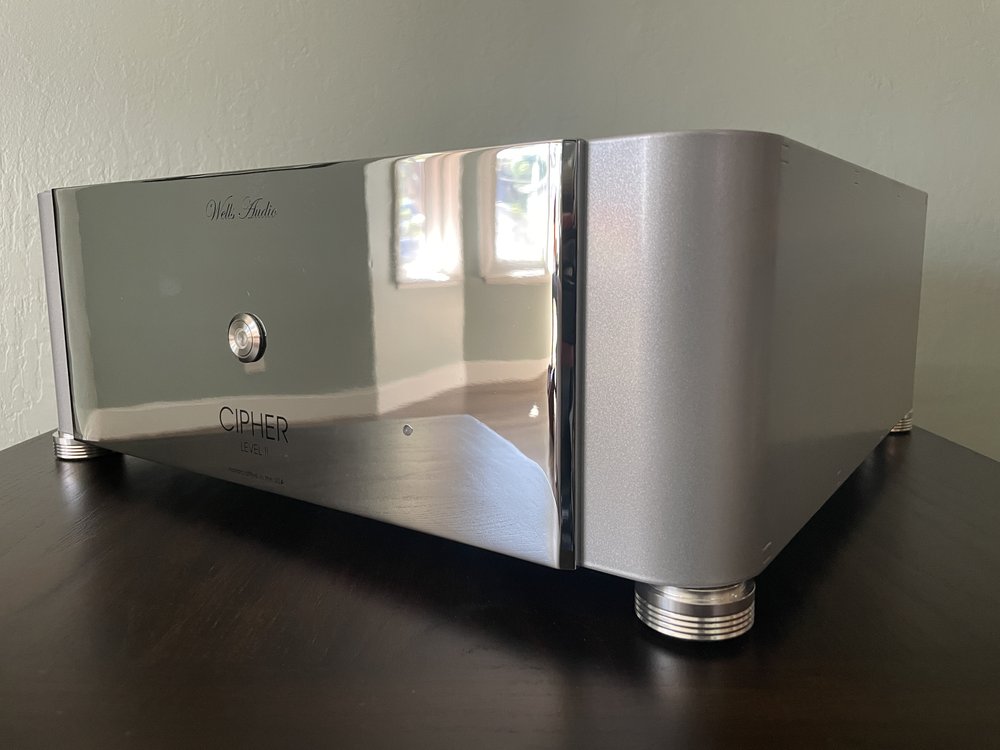 Cipher Level II and Cipher II Level II... What's in a name?
Cipher Level II and Cipher II Level II... What's in a name?
Wells Audio's manufacturing model focuses on tried-and-true and sometimes unique circuit designs and high-quality parts. As such, they offer multiple "levels" of performance on each product. Typically, as you move up from Level 1 to Level 2 or 3, you receive higher-quality parts in the power supply and signal path, and more attention is paid to lowering the circuit's noise floor with the implementation of various Bybee noise reduction components. It is important to note that all the levels use the identical circuit, and the base level provides a huge helping of the higher-level performance. Jeff was kind enough to send me both a Cipher II and a Cipher II Level II so I could experience the difference in sound between the two levels.
During my listening time with both units, I concluded that the base Cipher II provided a large helping of the more expensive Level II's sound quality and was quite engaging. This is a diminishing returns game, so the almost doubling price does not get you twice the performance. Still, it significantly upgrades dynamic expression, sound staging, and instrument separation and has a lower noise floor. Once you hear it, you may not want to return if your budget allows it. You've been warned.
Circuit Design
Jeff told me the Cipher II design concept was to:
"… essentially take the best IC-based digital tech I could find and graft it into our analog systems (the Commander), believing that if I were to send a signal derived from superior digital tech through our analog sections, I would get something superior to what I had experienced on the market. I think that I succeeded."
He felt there was no need to reinvent the wheel on the digital side and that the output circuitry and the power supply are responsible for much of a component's sound quality, particularly a digital-based one.
The Wells Audio Cipher II DAC ( $8,000 ) is powered by the ESS Sabre PRO DAC chipset implemented by Twisted Pear Audio. This chipset uses the ES9038PRO chip, a cutting-edge 8-channel stacked DAC summed to two channels. The ESS Sabre chip is renowned for its precise digital audio conversion, high dynamic range, and low noise floor. The Cipher II design implements a 12BH7 triode tube in the analog output section of the DAC. This is a daring choice, as tube-based DACs are often thought to bring warmth and distortion, qualities that some audiophiles either appreciate or avoid based on their preference for "coloration" in sound. Wells Audio asserts they have minimized these downsides by meticulously engineering the tube stage to be exceedingly quiet and linear.
Among other things, the Cipher II Level II ( $15,000 ) incorporates Rike's top Copper Foil caps, Polypropylene, Paper-In-Oil Q-Caps, and Mundorf film and foil caps, replacing the typical industry standard electrolytic caps in the B+ supply and filament supply. Bybee AC Purifiers have been added to reduce the noise floor, the 12BH7 tubes are cryogenically treated, and the IEC is upgraded to Furutech. Additionally, an internal re-clocker is added to further reduce digitally introduced jitter and noise.
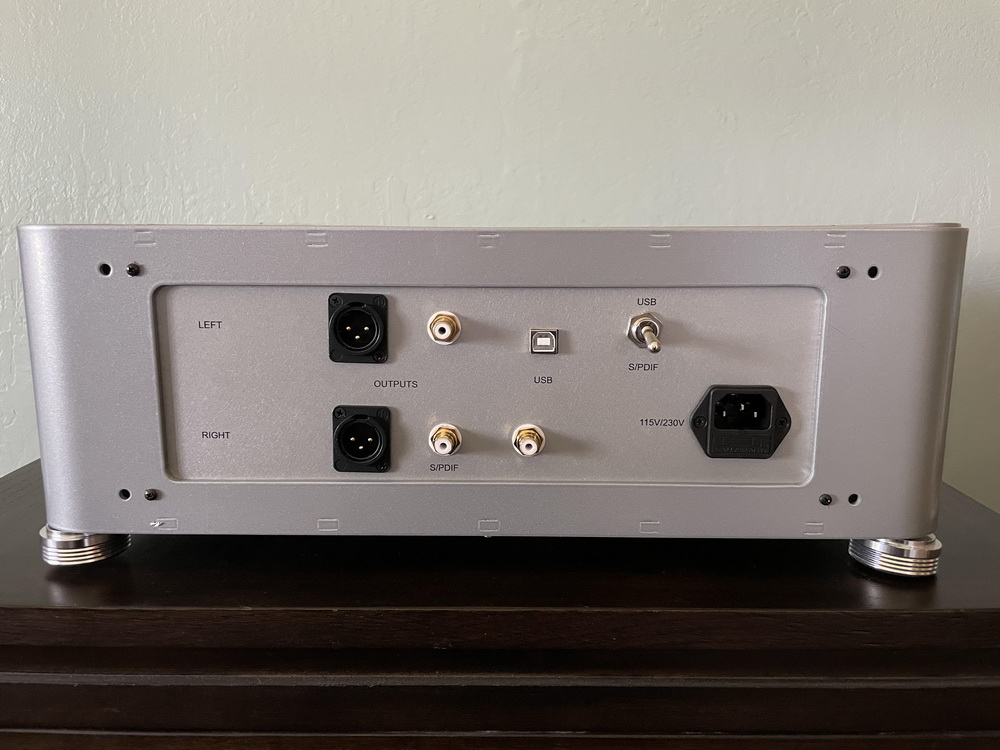 The all-aluminum case is available in black or silver with either black, grained, or chromed aluminum faceplates. My review unit had USB and SPDIF inputs selectable by a rear toggle switch. RCA and XLR outputs and the IEC power input finish out the rear panel. While the Sabre DAC chip design is fully balanced, the audio circuit is single-ended with the XLR outputs for compatibility. The Cipher II supports nearly all possible input sample rates, handling PCM up to 384kHz, DSD, and up to 512 DSD. The warranty is 3 years, parts and labor.
The all-aluminum case is available in black or silver with either black, grained, or chromed aluminum faceplates. My review unit had USB and SPDIF inputs selectable by a rear toggle switch. RCA and XLR outputs and the IEC power input finish out the rear panel. While the Sabre DAC chip design is fully balanced, the audio circuit is single-ended with the XLR outputs for compatibility. The Cipher II supports nearly all possible input sample rates, handling PCM up to 384kHz, DSD, and up to 512 DSD. The warranty is 3 years, parts and labor.
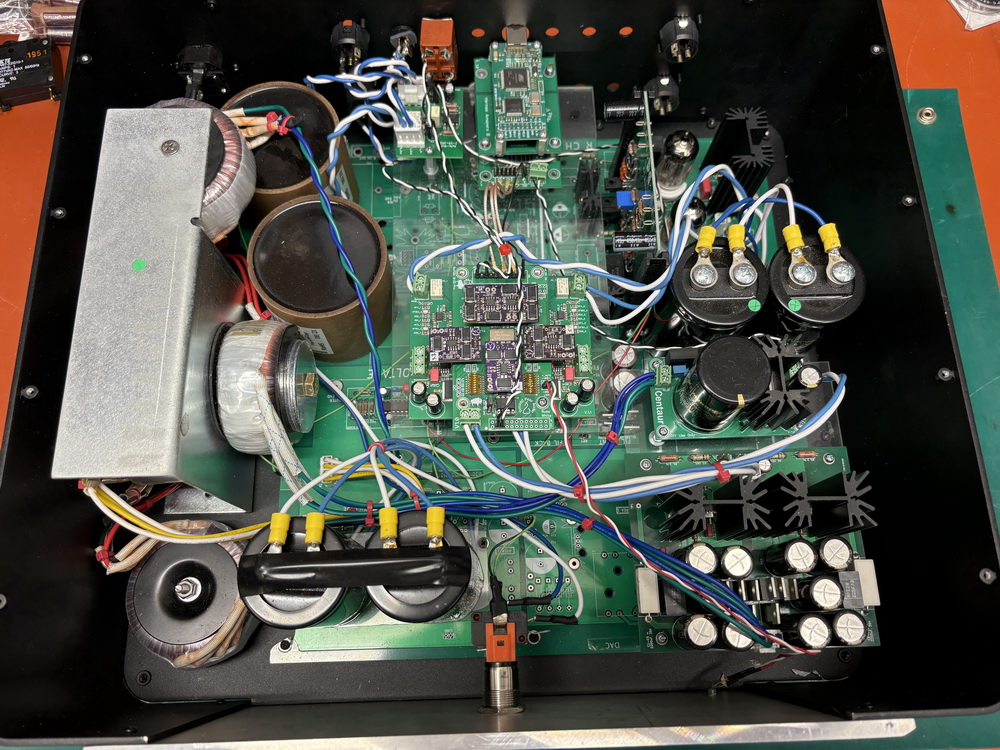 Cipher II Level II
Cipher II Level II
Let's Peek Inside
Removing the top reveals a massive power supply that employs not two, not three, but four toroidal power supplies. It also reveals the Cipher II Level II's modular design, which suggests that future advances in digital technology could be implemented as an upgrade by Wells Audio.
I asked for a description of the analog circuit used in the Cipher II Level II DAC, and Jeff provided this rundown.
1) A single gain stage is used to create a classic triode sound using one of the most linear triodes ever made, the 12BH7A. Linear, in this case, means minimal high-order harmonics, the kind that produces irritation and listener fatigue. What remains is a small amount of mainly 2nd-order harmonics in the distortion spectrum. The result is pure triode tonality.
2) A 12BH7A unity-gain cathode-follower buffers and isolates the gain stage from the cable capacitance going to the preamp. This achieves wider bandwidth, faster transient tracking, and reduced high-frequency distortion.
3) In each channel, a single, state-of-the-art output capacitor couples the cathode follower to the RCA output jack.
The filament and plate power supply and its regulation incorporate distinctive design features thoroughly explained in an excellent White Paper on the Wells Audio website. I am sensing your eyes glossing over, so to avoid overwhelming you with too much detail, here is a link to the White Paper for your reference.
Biases…
As reviewers, we all have personal biases. Exposing those biases to the reader is critical so they can more fully understand where you are anchored when you make a statement about a product's musical quality. In each review, I try to take some time to expand on my "on" buttons. If they relate to yours, then my reviews may have a grain of significance for you. If not… well…
I listen to music for what it does to me, not to deconstruct it.
I am looking for an emotional connection to the music, which is provided by a combination of details and meaning. Details, without meaning, bore me, and the industry trend toward products that focus on hyperrealism at the expense of musical meaning distresses me. I have no interest in an "Audio Microscope."
In my Audio shop, I hang a quote from Acoustic Zen's owner/designer, Robert Lee, an accomplished violinist and engineer.
It reads as follows…
"Music, at its best, has an indefinable character of soulfulness ... Acoustic Zen calls it "Sound Afloat." When music is right, when it is perfect, it seems to soar and dart like children playing on a big, green, open lawn. Music takes you with it. Music gathers us inside itself. It changes our lives. Great music makes us high on nothing but itself. It lets us be as elevated as we truly are, at our best, inside our souls."
"Music gathers us inside itself." Just think about that for a moment. Five simple words that describe what I am pursuing. How about you?
Listening Impressions
To impress me, a component must evoke an emotional response. The Cipher II Level II is one of the rare digital components that manages to do just that. While I am an unrepentant analog enthusiast, I appreciate the significant progress being made in the digital realm—thank goodness for that!
While listening to this DAC, I thought of Jeff's circuit description, in which he said: "What remains is a small amount of mainly second-order harmonics in the distortion spectrum."
Much like my Nelson Pass-designed First Watt SIT 3 amplifier, which also pays attention to second-order harmonics, this DAC presents music with a rich tonal density. I suspect the similarities in sound between the two components were more than coincidence. I'd describe it as warmth, but that's too strong a word, as it brings to mind the idea of a blanket being thrown over the music. Instead, it is a richness balanced with clarity that offers a taste of the musical connection I seek.
Here's a more in-depth breakdown of its sound characteristics:
Soundstage
Instruments are placed precisely across the width and depth of the stage, creating an immersive listening experience and allowing the listener to understand the spatial relationship between instruments and vocals.
Each instrument and vocal line is delineated, creating a sense of air and space between them. The separation helps to avoid congestion in complex musical passages, even in dense, layered compositions.
Transparency and Clarity
Despite employing a tube-based output stage, which often implies a warmer or softer sound, it remains highly transparent without adding excessive coloration.
While it delivers excellent detail, it avoids sounding clinical or sterile. The Cipher II strikes a delicate balance between analytical and musical, providing a neutral presentation that retains a rich, organic quality.
Small dynamic shifts, such as the decay of a note or the slight variations in a singer's breath, are rendered with nuance. This enhances the emotional connection to the music, making the listening experience more engaging.
Bass Performance
While not the last word in ultimate bass extension or grip, the bass is satisfyingly tight and authoritative and offers a well-defined low-end extension. It avoids the tube pitfall of excessive bloom.
Important to me, the bass provides fullness and weight to the music without overpowering the midrange or treble.
Midrange
Voices are natural and lifelike, with a sense of presence and intimacy. Whether it's a blues singer's gravelly texture or a jazz vocalist's smoothness, the Cipher II Level II renders vocals with a very natural feel.
Guitars, pianos, and cellos sound full-bodied, with a sense of body and timbral accuracy.
High Frequencies
The highs were smooth, extended, and airy without sounding harsh or brittle.
High-frequency details, such as cymbal crashes or the upper harmonics of a piano, had natural decay and shimmer. This contributes to the overall sense of realism, allowing high frequencies to blend seamlessly with the mids and lows.
Sibilant sounds, such as sharp "S" or "T" sounds in vocals, are controlled, making for an easy and relaxed listening experience, even during extended sessions.
Dynamics
It exhibits good dynamic range, capturing the music's softest and loudest parts with equal finesse. It delivers the energy and impact required for dynamic recordings, making large-scale orchestral works or live recordings particularly impressive.
The Cipher II maintains composure, and loud crescendos in classical music are conveyed with authority without sounding compressed or congested.
Musicality
One of the Cipher II Level II's defining elements is its ability to convey emotion and musicality. Despite being highly transparent and detailed, it avoids the trap of sounding too analytical. Combining its detailed resolution with the harmonic richness of tubes makes it a joy for long listening sessions.
Overall, the Cipher II Level II delivers a very balanced sound signature. It is neither too forward nor too recessed in any part of the frequency range, which results in a cohesive and harmonious sound presentation.
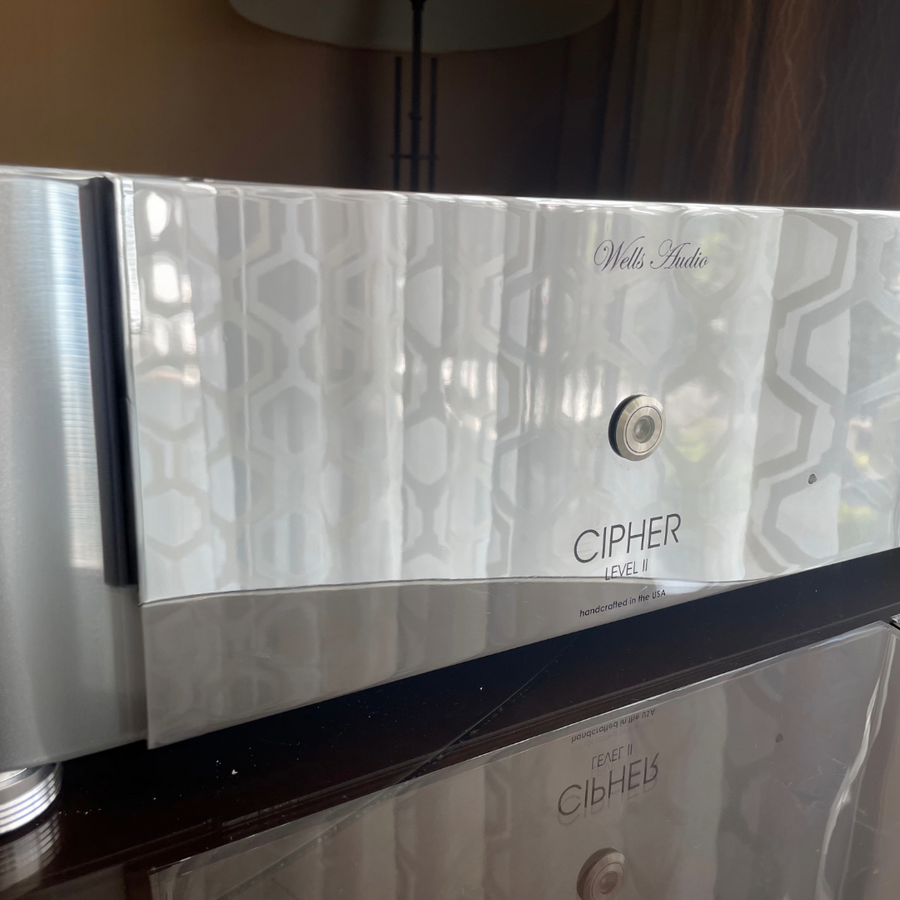 Wrapping it up…
Wrapping it up…
Jeff has created a unicorn digital product that adds subtle harmonic richness to the sound without sacrificing the precision that ESS Sabre chips are renowned for. This combination of digital clarity and analog warmth creates an engaging DAC, providing a "best-of-both-worlds" experience and delivering musical detail with density and meaning.
As mentioned earlier, I was initially drawn to this DAC because of its overall sense of calmness, neutrality, and impressive resolution of detail, which added to the musical experience and more fully "explained the music" without becoming its focus. Equipped with the ESS Sabre Pro chip, a tube output stage, premium capacitors, and reduced jitter through internal reclocking, the inclusion of Bybee AC Purifiers, cryogenically treated tubes, and premium capacitors like the Rike Copper Foil Q-Caps, this DAC offers an immersive soundstage, lifelike dynamics, and a warm yet detailed presentation that combines technical precision with a rich, emotionally engaging sound. It serves the music well.
As a long-time fan of ladder DACs, I recently mentioned in my Mojo Mystique X '24 NC review that I had not yet been able to listen to a Delta Sigma DAC for an extended time without growing dissatisfied. Much like saying Beetlejuice three times, as soon as I wrote that statement, a Delta Sigma DAC that I could listen to appeared in the form of the Wells Audio Cipher II Level II.
The blending of tube and solid-state sound is a delicate art. I've encountered a few products that have successfully walked this tightrope. Some examples include the offerings from Linear Tube Audio, David Berning, and John Tucker's Exemplar Audio Exception SE line stage. Products that effectively balance the desirable characteristics of tube sound, such as tonal density and harmonic richness, with the strengths of solid-state sound, such as speed, extension, and bass articulation.
I will now add the Wells Audio Cipher II Level II DAC to that shortlist. It successfully incorporates some of the best tube qualities into digital sound without excessive coloration and provided me with an eminently listenable digital source.
Beetlejuice, Beetlejuice, Beetlejuice.
Cipher II Level II $15,000.00 ( reviewed)
Cipher II $8,000.00
Gruve DAC $800.00
Gruve Level II DAC $1500.00
Warranty 3 years parts and labor
Review System
Turntable: AMG Viella V12 JT
Cartridges: Micro Benz LP-S, Grado Statement 3
Phono Stage: Tom Evans Groove + SRX MK2.5
CD Transport: Jays Audio CDT-3 MK3, McCormack SST-1
Preamp: SMc Audio VRE-1C, VAC Master w/ phono option
Amplifier: SMc Audio GT23 DNA 0.5 Monoblocks
Digital: Innuos Zenith Mk III, Phoenix USB, and PhoenixNET,
Mojo Audio Mystique‘24 NC DAC, SMc Ultra DAC.
Speakers: Acora Acoustics SRC-2, REL S/510 six-pack
Tape: Crown CX 822
Cables: Belden Iconoclast, Cardas, SilverSmith Fidelium, Genesis Absolute Fidelity,
Shunyata
Accessories: Stillpoints Apertures and Ultra 2’s, Kirmuss KA-RC-1, Wally Tools
Cartridge setup gear, DS Audio ION 001
Power: Shunyata Denali 6000/T v2, Typhon T2
Specifications
Inputs
Stereo (2 channels)
PCM (I2S) (up to 32-bit, 384kHz)
DoP (DSD over I2S)
DSD
S/PDIF (Consumer level or TTL-level)
Highlights
Four layer circuit board optimized for mixed signals
Designed specifically for the ESS Sabre PRO series DAC chips (ES9038)
8 channels preconfigured for 2-channel (stereo) operation
High precision, ultra-low-phase noise clock and integrated reclocking
Optional high precision external clock connections
Five independent supply inputs for digital and analog stages
Direct DSD, DoP, I2S and S/PDIF inputs supporting up to 32-bit/384kHz and DSD512
Switchable S/PDIF digital input
Accepts both consumer level and TTL-level S/PDIF input
Optional digital volume control
Lock LED
Fully balanced, dual mono symmetrical operation for ultra-low noise floor
Four layer circuit board for optimized layout
VOCM Servos eliminates common-mode input offset current from the balanced I/V stages
DC Servos eliminate offset in single-ended stages
Supported Sample Rates
44.1kHz, 48kHz, 88.2kHz, 96kHz, 176.4kHz, 192kHz, 352.8kHz, DSD512
Manufacturer Information
Wells Audio https://www.wellsaudio.com/
106 Bascom Court
Campbell, CA 95008
Contact
jeff@wellsaudio.com
kristen@wellsaudio.com
(408) 376.0861


